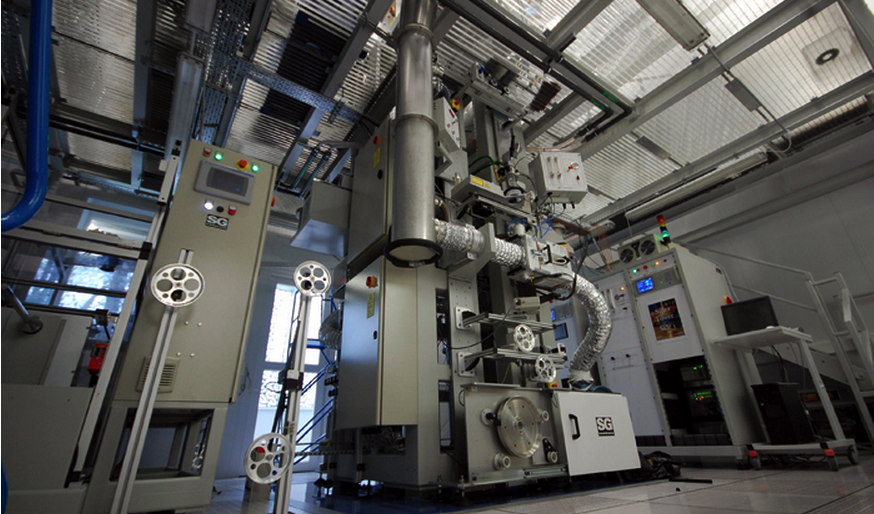 Although it’s rather inconspicuous, fiber optic technology is incredibly important to the society in which we all live in today. From the bundles of cables on our ocean floors, which act as the pipeline for the world’s internet data, to telephone communication, to military and UAV uses, fiber optic cables play a major role in all of our lives in one way or another.
Although it’s rather inconspicuous, fiber optic technology is incredibly important to the society in which we all live in today. From the bundles of cables on our ocean floors, which act as the pipeline for the world’s internet data, to telephone communication, to military and UAV uses, fiber optic cables play a major role in all of our lives in one way or another.
While traditional cylindrical fiber optics have been around for decades, new highly advanced forms of the technology have recently begun to emerge. The fiber optics we’ve scene come about recently rely on complex inner structures within each strand of glass. These structural complexities are incredibly difficult, costly, and time consuming to produce, using current available technologies. But Researchers at the University of Southampton, UK believe that they may have found a solution, 3D printing.
The researchers, which include Professor Jayanta Sahu and his team from the University of Southampton’s Zepler Institute, along with Dr Shoufeng Yang from the Faculty of Engineering and Environment at SU, say that these new methods “could pave the way for more complex structures capable of unlocking applications in a wide range of industries, from biotechnology to aerospace and telecommunications”.
For anyone unfamiliar with the fiber optic fabrication process, which I assume is most of our readers, the process typically relies on the creation of a preform, which is then heated to a temperature very close to the melting point of the silica or glass. Manufacturers then rely on gravity and automation to pull down thin strands of the near melted material, forming the fiber optic cable elements we are all used to seeing. The structure of the preform plays a major role in the final structure of each fiber it creates. It’s when manufacturers wish to produce cables with intricate microstructures, that things get really tricky.
“We will develop novel Multiple Materials Additive Manufacturing (MMAM) equipment to make optical fiber preforms both in conventional and microstructured fiber geometries in silica and other host glass materials,” explained Professor Sahu. “Our proposed process can be utilized to produce complex preforms, which are otherwise too difficult, too time-consuming or currently impossible to be achieved by existing fabrication techniques.”
One type of fiber that the datacom and telecom industries are excited about, is called Photonic bandgap fiber, and it promises to offer many benefits to traditional fiber. Such optics allow for the confinement of light within the fiber based on the geometries of the structure. Via the 3D printing method being explored here, researchers should be able to create these types of fibers much faster and more affordably, and even create structures which were unimaginable before.
“There are numerous challenges including the high melting temperature of the glass, which is over 2000˚C in case of silica; the need for precise control of dopants, refractive index profiles and waveguide geometry; and the need for transitions between the layers to be smooth, otherwise the properties of the resultant fiber will be altered,” Professor Sahu added.
By printing the preforms layer by layer, researchers will be able to intricately control the internal structure of each preform, and thus the individual fibers which are spawned from the preform during the manufacturing process.
The Engineering and Physical Sciences Research Council (EPSRC) has provided funding of approximately $1.1 million to the university for this project, of which researchers hope will begin paying off shortly.
Let’s hear your thoughts on the implications of this possibly new fiber optics manufacturing process. Discuss in the 3D Printing & Fiber Optics forum thread on 3DPB.com.
Subscribe to Our Email Newsletter
Stay up-to-date on all the latest news from the 3D printing industry and receive information and offers from third party vendors.
You May Also Like
Gorilla Sports GE’s First 3D Printed Titanium Cast
How do you help a gorilla with a broken arm? Sounds like the start of a bad joke a zookeeper might tell, but it’s an actual dilemma recently faced by...
Nylon 3D Printed Parts Made More Functional with Coatings & Colors
Parts 3D printed from polyamide (PA, Nylon) 12 using powder bed fusion (PBF) are a mainstay in the additive manufacturing (AM) industry. While post-finishing processes have improved the porosity of...
$25M to Back Sintavia’s Largest Expansion of Metal 3D Printing Capacity Since 2019
Sintavia, the digital manufacturing company specializing in mission-critical parts for strategic sectors, announced a $25 million investment to increase its production capacity, the largest expansion to its operations since 2019....
Velo3D Initiates Public Offering in a Bid to Strengthen Financial Foundations and Drive Future Growth
Velo3D (NYSE: VLD) has been among a number of publicly traded 3D printing firms that have attempted to weather the current macroeconomic climate. After posting a challenging financial report for 2023,...

































